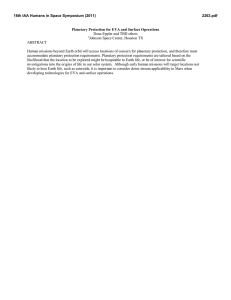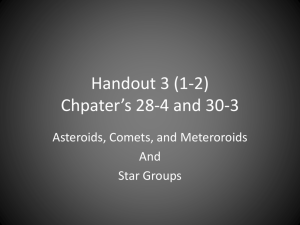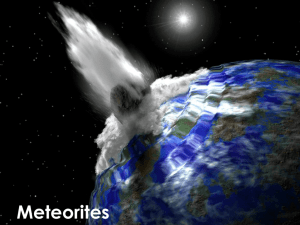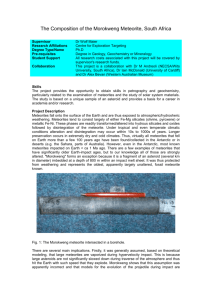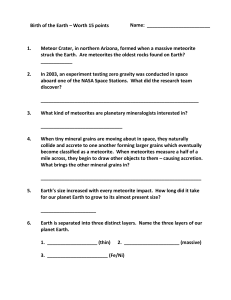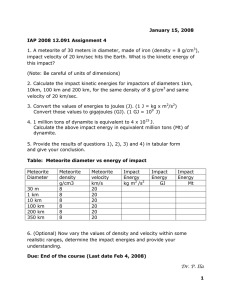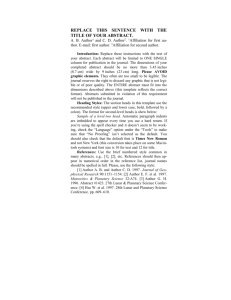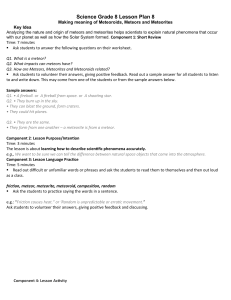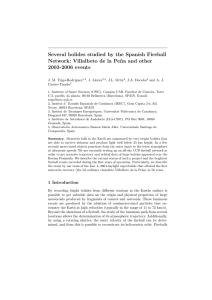V. METEORITICS
advertisement
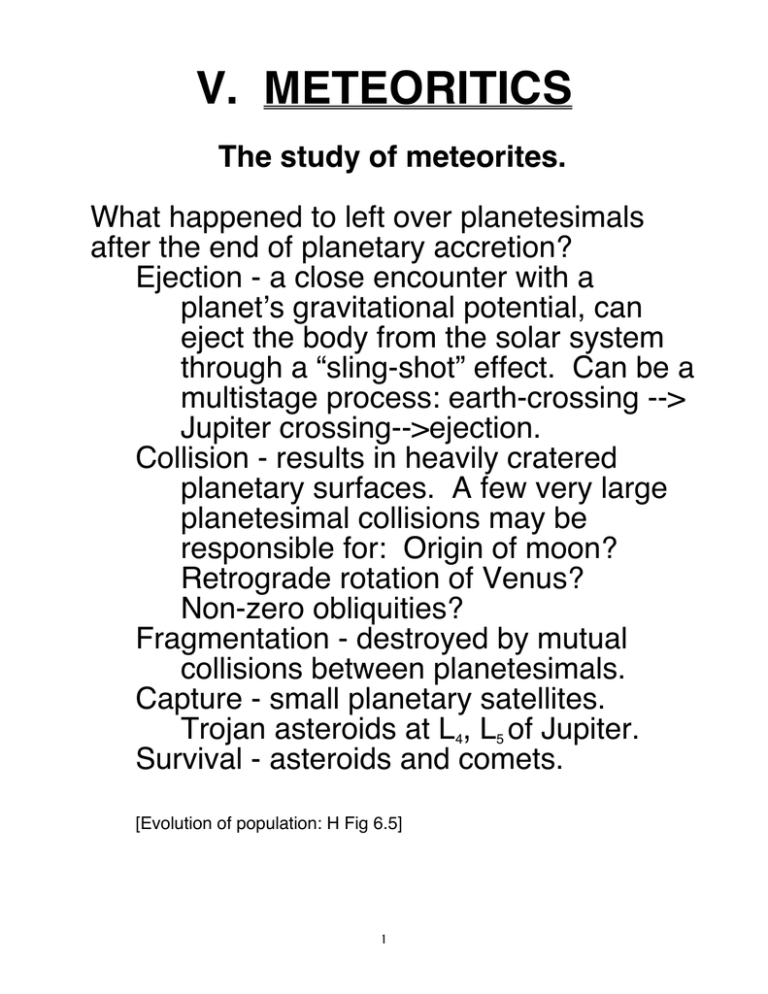
V. METEORITICS The study of meteorites. What happened to left over planetesimals after the end of planetary accretion? Ejection - a close encounter with a planet’s gravitational potential, can eject the body from the solar system through a “sling-shot” effect. Can be a multistage process: earth-crossing --> Jupiter crossing-->ejection. Collision - results in heavily cratered planetary surfaces. A few very large planetesimal collisions may be responsible for: Origin of moon? Retrograde rotation of Venus? Non-zero obliquities? Fragmentation - destroyed by mutual collisions between planetesimals. Capture - small planetary satellites. Trojan asteroids at L4, L5 of Jupiter. Survival - asteroids and comets. [Evolution of population: H Fig 6.5] 1 The Wonderful World of Meteorites Some Definitions Asteroid - a rocky body in space larger than a few hundred meters in size. Largest size is about 1000 km in diameter. Comet - an asteroid-sized body composed of a significant proportion of icy material such that outgassing is observed when the body is near the sun. Meteoroid - small body in space with a size between ~1mm and a few hundred meters. Interplanetary dust particle (IDP) - anything smaller than ~1mm. Typically a few mm. Meteorite - A meteoroid that has reached the Earth’s surface. Typically named after the place they are found. A distinction: Fall - a meteorite whose arrival was witnessed. Find - a meteorite that is “accidentally” found. No information on its arrival. 1

